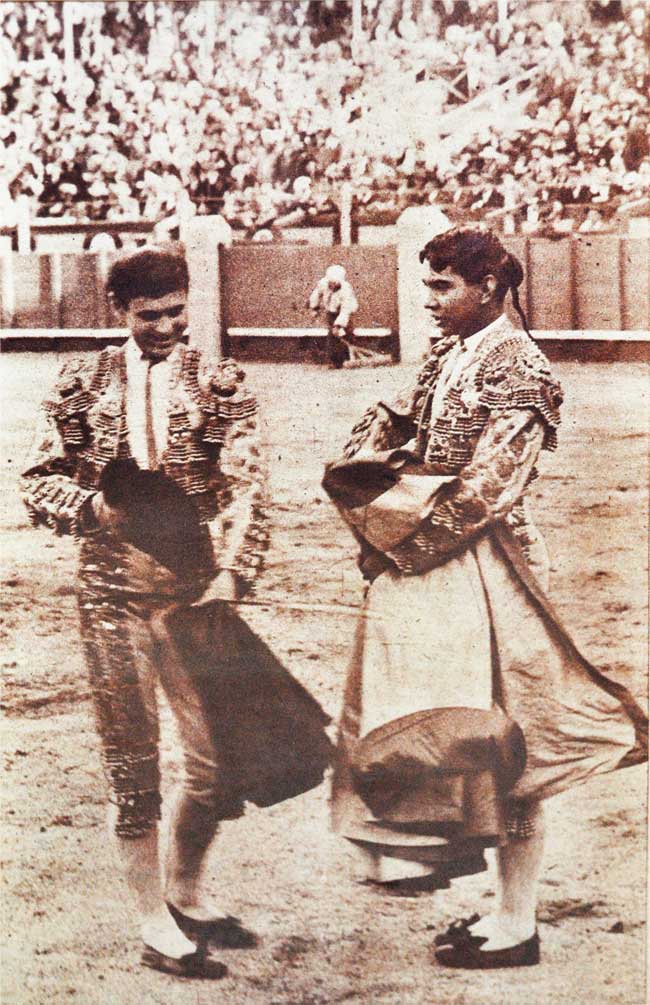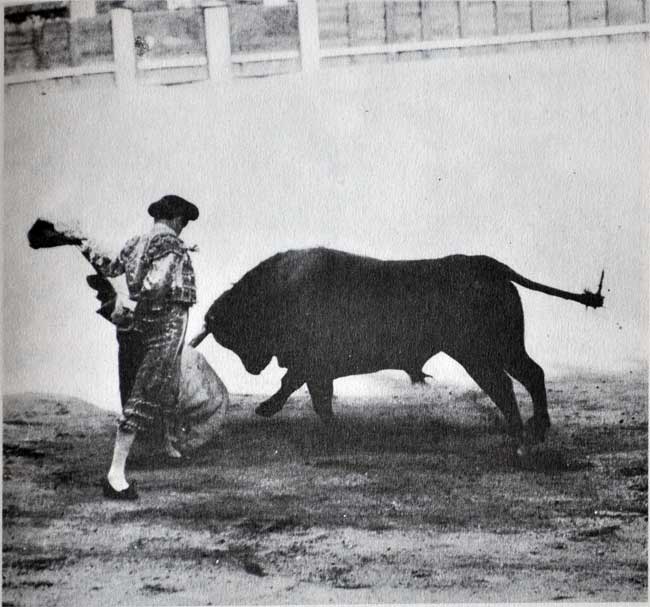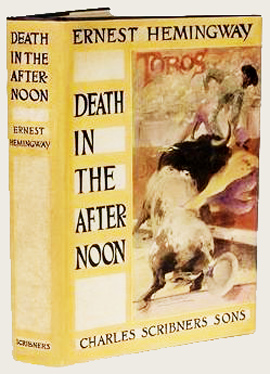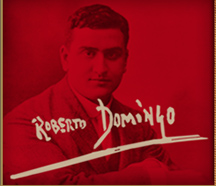Rodolfo Gaona alternative, from the hands of Ricardo Torres (Bombita) in the bullring of Vista Alegre in May 1908..

English version from Ernest Hemingway’s book Death in the Afternoon (Charles Scribner’s Sons, 1932):
“The best banderillero I have ever seen was Manuel Garcia Maera. He, with Joselito and RODOLFO GAONA, the Mexican, were the greatest of modern times. A peculiar thing is the overwhelming excellence of all Mexican bullfighters with the banderillas. For the last few years, each season there have come to Spain from three to six unknown Mexican apprentice bullfighters any one of whom is as good as or better than the best artists with the banderillas in Spain. They have a style in their preparation and execution and an emotional quality that comes from the unbelievable chances they take, that are, except for the Indian coldness of the rest of their work, the mark and characteristics of Mexican bullfighting.
RODOLFO GAONA was one of the greatest bullfighters that ever lived. He was produced under the régime of Don Porfirio Diaz and worked in Spain exclusively during the years when the fights were suspended while Mexico was in revolution. He modified his early style in imitation of Joselito and Belmonte and competed with them on almost equal terms during the season of I915; on equal terms in 1916, but after that a horn wound and an unfortunate marriage ruined his career in Spain. He was steadily worse in his performances as a fighter while Joselito and Belmonte improved. The pace, he was not as young as they were, the new style, and his loss of morale caused by domestic difficulties were too much for him and he returned to Mexico where he dominated all other bullfighters and served as a model for all the present crop of elegant Mexicans. Most of the youngest Spanish bullfighters have never seen either Joselito or Belmonte, only their imitators, but the Mexicans have all seen GAONA. In Mexico he was also the master of Sidney Franklin and Franklin’s style with the cape, which so puzzled and amazed Spaniards when he first appeared, was formed and influenced by GAONA. Mexico is producing now, during another period without civil war, a quantity of bullfighters who may become great if the bulls leave anything of them. The arts never flourish much in war time, but with Mexico at peace the art of bullfighting is flourishing now to a greater degree in Mexico than in Spain. The difficulty is the difference in size, temperament and nerve of the Spanish bulls which, when the young Mexicans come to Spain they are not used to, and so are, often after the most brilliant work, caught and gored not through any defects in their technique, but simply because they are working with animals more nervous, powerful, and difficult to judge thanthose of their own country. You cannot have a great bullfighter that is not gored sooner or later, but if you gore him too early, too often and too young he will never be the bullfighter he might have been if the bulls had respected him…”

The gaonera as performed by its inventor, Rodolfo Gaona. (image & caption from E. Hemingway’s book)

Ernest Hemingway Death in the Afternoon, (Charles Scribner’s Sons, 1932)
Book cover with color facsimile of “The Bullfighter” by Roberto Domingo.

